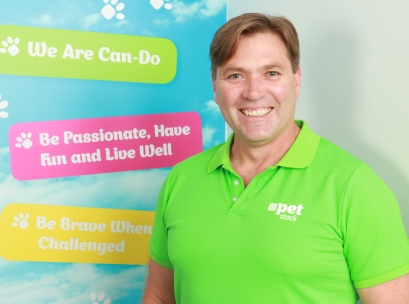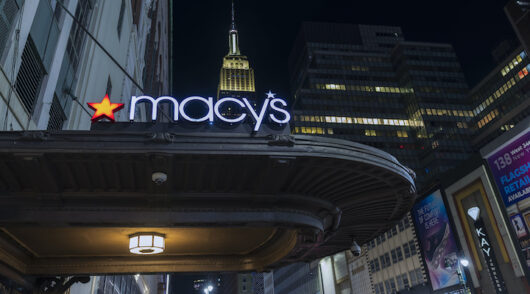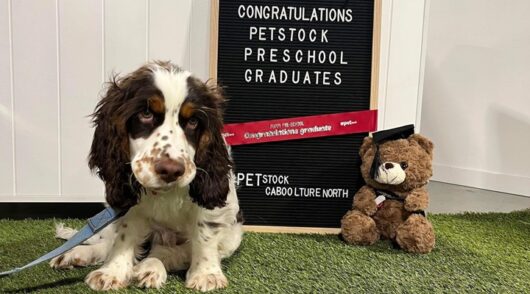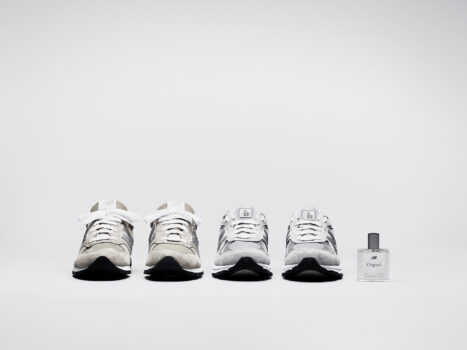 Shane Young started PETstock in 2002 alongside his brother, David, and over the past 16 years has grown the family business into the second-biggest specialty pet retailer in Australia, after Greencross Limited’s Petbarn.
Shane Young started PETstock in 2002 alongside his brother, David, and over the past 16 years has grown the family business into the second-biggest specialty pet retailer in Australia, after Greencross Limited’s Petbarn.
While PETstock has certainly benefited from the high rate of pet ownership in Australia and consumers’ increased willingness to spend on their pets, Young has continued to evolve the business to become a one-stop-shop for consumers, with the launch of PETstock Vet in 2012.
Today, PETstock claims to be the biggest pet-grooming business in the country. These services are increasingly critical, as pureplay online retailers, such as Pet Circle and most recently Amazon, compete on price and convenience.
Here, Young explains why the rise of boutique pet food brands is a good thing for PETstock, and discusses the major digital projects he
is working on now.
Inside Retail Weekly: How have the last 12 months been for PETstock from a commercial perspective?
Shane Young: We’re a private company, so don’t disclose those numbers, but all parts of our business have seen really strong growth. Our comparative sales are really strong. And our New Zealand business is going really well and growing after being there for three years. We’re looking to roll out some more stores there this year. We’re at 139 stores in Australia and 11 in New Zealand. We’re even stronger online in New Zealand; we’re the number one pet retailer there.
IRW: Greencross Limited has laid out a growth strategy of colocating their vet clinics in Petbarn stores, but they had a tough year last year. Does that say something about the wisdom of this integrated strategy?
SY: Obviously, we’re on a smaller scale, but we agree with that strategy. We have 21 hospitals and they’re all co-located in our stores, but you’ve got to execute on the strategy. The problem is that there’s a shortage of experienced vets in Australia, worldwide actually. We’ve been focusing really hard on our grooming salons. We’re the biggest groomer in the country, and we’re trying to raise the bar on quality in that field by making sure the people we hire are highly qualified, but also providing an environment they want to work in. If you start cutting costs, you risk damaging the culture and environment. We’re lucky to be in the pet space, it’s a happy and vibrant space.
IRW: The pet category has traditionally been seen as ‘recession proof’ because many people now see their pets as part of the family and they tend to not cut back on spending, even if money is tight. Is that still the case?
SY: I think animal ownership is not necessarily increasing, but spending is. One thing is that there’s a greater quality of food available in Australia now. The range of dog food in Australia has more than doubled in the past few years, but you still need to be on your game because it’s easier for pure-play online retailers to enter the market. I think a lot of their strategy is driven by price only, whereas by offering services, we provide not only what the consumer wants and needs, but also that expertise. They trust that we’ll have the right products on the shelf.
IRW: Speaking of pure-play online retailers, Amazon recently started selling pet food and supplies in Australia. Did you know they were planning to launch in the space? Has it impacted your business?
SY: We knew they were coming. We’ve been following them for a few years and watched their penetration into Canada, where it was a
lot harder for them [to grow] because of the [dispersed] population. What Amazon does in the US is incredible, but they’ve also got scale. I have a friend in New York City and he told me that when the van pulls up to deliver mail to his apartment building, all of the packages are from Amazon.
A good chunk of our business is regional, and some of our products trade with a certain margin and weight that is very hard to play across regionally. If you’ve got a high-weight, low-margin item, because of the cost of freight, it’s very hard to play in that space. Also, country people really like to shop local, although they’ll shop outside that if you let them down. In the city, we knew there would be disruption, so we already sell into Amazon. You’ve got to be across all these categories because the consumer chooses who they want to shop with, and we want to be part of that.
IRW: Which products are you selling on Amazon?
SY: We offer a selection of products. There are certain products that Amazon targets for whatever reason. We also have long standing relationships with suppliers, and they have chosen us to sell into Amazon.
IRW: I understand you recently replatformed the e-commerce site. What are some of the new capabilities that you’ve gained? And what else are you doing on the digital side of things?
SY: Delivery is a big one. You’ve got to be best in class to win, and as a bricks-and-mortar retailer, we play to our strengths. We’ve got nearly 150 stores, so arguably we’ve got nearly 150 depots. If someone in Townsville orders something, you don’t want to send it
from Melbourne. We can offer same-day or next-day delivery to 90 per cent of Australia and 95 per cent of New Zealand. That’s why
we’ve been so successful there.
When it comes to the replatforming, we just felt that the bigger platforms have got worldwide scale and ensure you’re staying up to
date. And you don’t have the stress of trying to hire developers all the time; they are hard people to get, let alone hold.
IRW: Which platform do you use?
SY: We’re across a couple because we’ve got Pet Stock Australia and New Zealand and a wholesale business. We’re going across to Shopify Plus at the moment, and we’ll put it to the test to see what works best.
IRW: Circling back to Amazon, how have sales been since you launched on the marketplace?
SY: Sales have been low. Their offering is still quite small, so the consumer isn’t getting the range. And once again, if they’re already
shopping online somewhere else and that provider is meeting their needs, they won’t switch until that provider doesn’t meet their
needs. That’s what is happening particularly in New Zealand, where they’re quite happy to sign up for subscription models.
RW: Does PETstock offer a subscription service?
SY: Yes, we do. It’s customised to your needs based on the age, size, gender of your pet, so you get the right amount of product turning up at the right time, not too much or too little. It’s mainly for food, but also pharmaceuticals like flea treatment. It’s big in New
Zealand, but small in Australia. We’re working to grow it in Australia.
IRW: What are some other projects you’re working on now?
SY: We’re working really hard on logistics. We’re working on entry into China. We launch on Alibaba’s Tmall in about three weeks’ time. We’re making sure we’re on trend digitally, that our app is functional and actually of use to a pet owner, rather than just telling you how many loyalty points you have. That’s the big goal we’re working right now.
IRW: Is it a loyalty app?
SY: It’s a loyalty app, but it’s more of a handy tool to keep track of the health of your pet. That’s definitely one of the biggest trends right now, the way pet health is moving closer to what’s happening in human health. You can already chat to a vet on your phone – that’s happening around the world now – but now you’re beginning to be able to digitally monitor your pet’s health while you’re talking to a vet.
Like in Israel, every person’s health record is digitised, and they can take measurements with a device while talking to their doctor, and the doctor can see what’s going on remotely. It’s harder with an animal because they don’t talk, but you’re able to do things
like track obesity depending on the gender, age and activity level of your pet.
IRW: What are some of the other major trends in the pet supplies and care sector right now?
SY: Boutique and local brands are a big trend both here and around the world. It’s no longer about being made in Australia but made in Victoria. People feel like boutique brands have more care attached to them, which is interesting because the big companies have a lot of science and research behind them. Home preparing is making a comeback, because people want to be a part of the experience.
It’s in line with people’s own values. If they’re eating organics, they want to offer organics to their pet.
IRW: Does the rise of boutique food brands create an opportunity for companies like PETstock to take a bigger slice of the pet food market? Right now, Coles and Woolies have the biggest share of that market.
SY: Absolutely, because these brands are too small for the supermarkets to be bothered with. For us, it’s about having lots of little fish rather than one big fish. If you’re a small brand with 1000 customers, that’s fine. But would Woolies want to have 1000 customers on one brand? I don’t think so.
That’s where online comes in. We can’t fit all these products in our bricks-and-mortar stores and they just keep coming, so some will have to sit online and some will be in some stores and not others. Kind of how Whole Foods used to be.
IRW: Definitions and legislation around bulky goods retail have been evolving over the past few years. Has this impacted PETstock at all? If so, how?
SY: We were one of those retailers that was sometimes allowed [in large format centres] and sometimes not, depending on the state
and the planner at the time. Now, we do fit into that category around Australia. The Bulky Goods Association has done some really good work over the years, and I think bulky goods are in a really healthy place now in Australia.
Landlords are also working harder on their mix. If you’re just going to be a furniture retailer, you’ll fail. You need foot traffic. We’re a
retailer that brings foot traffic, we’ve got high visitation.
IRW: As the bulky goods space has become healthier, has that impacted rents at all?
SY: I think rents as a whole are down, whether in shopping centres or homemaker centres. With so many departures, particularly a big
one like Masters, it leaves a lot of space, and rents are certainly not up. We’re doing around 30 [lease] renewals a year, and we might get a really strong centre where the landlord can negotiate harder, but generally rents are down. The big shopping centres will definitely drop their rent to get the mix right.
IRW: Has this created a scenario where you’re looking to expand your store network?
SY: Not really. We have a rollout forecast and we’re okay to be above or below that. A good site is always a good site.
IRW: A lot of large-format retailers are experimenting with different footprints, such as smaller stores in metro areas. Are
you doing anything along those lines?
SY: We’ve actually got more stores in metro areas than in regional areas. We’re in Broadway, Macquarie and Campbelltown in Sydney,
and Knox outside of Melbourne. Convenience is everything, so we’re definitely open to [experimenting with store footprints], but it’s got to be right. It’s got to be a good centre, and you’ve got to know what’s happening in that area. If a Bunnings up and moves, the centre of town moves.
IRW: The franchise industry is under a lot of scrutiny at the moment, and I’m hearing that franchisors are having a hard time selling businesses. Has this impacted PETstock at all?
SY: We haven’t really been impacted to be honest with you. It’s kind of an in-house joke that we’re like the mafia, you’ve got to know
someone to get in. We’re a franchise business, but we don’t actively source franchisees. We don’t even have a franchise sales division. I
think we did one franchise store last year with an existing guy within the group, but if we get a good person, we’ll consider it.
Legally, we’ve always ticked all the boxes. We’ve always been ahead of the curve there. When all the legislative changes came
through, we slept well at night because we’d made those changes already. But I definitely know other retailers in the space that have
said it’s been harder [to find franchisees]. I think it’s actually the tightening up of the banking sector. If they’ve tightened up on home
[loans], they’ve certainly made it harder to get a business loan.
IRW: What’s the thinking behind not having a franchise sales division?
SY: We’re not actively rolling out heaps of stores. We think franchising works really well for us regionally, where the person
lives in that town, their kids go to school in that town, they’re part of the sporting clubs. We also know we have a really happy
franchise network, and people do their homework. They talk to other franchisees, so the product takes care of itself.
IRW: What are some examples of how the brand’s culture comes through?
SY: We have some basic rules that we’ve stuck to from day dot because even as the world has digitised, you always need good
people. If you treat your people well that will shine through in your brand. You can have the best computers and systems in the world,
but you still need that symbiosis between computers and people to execute.
You need to look outside and think about what you can do for your people. We’re really proud of our charity and have a large salary
sacrifice towards our charity. We run an internal fitness program for our team that we’re really proud of. We run programs where people are working towards goals, and we support them with those goals. We have people quitting smoking and losing weight. It’s important because you can’t trade without people.





